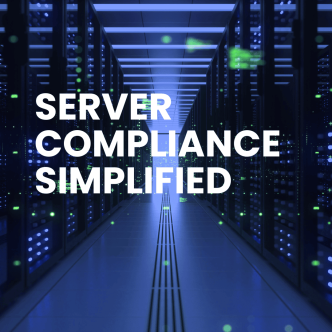What does it mean to harden servers?
Server hardening refers to steps taken to enhance the security of servers like web servers, database servers, file servers etc. It is a crucial practice that all organizations must carry out to protect their critical IT infrastructure and data assets. It’s like installing extra locks and alarms to restrict unauthorized access to your house.
At its core, server hardening aims to establish stringent controls that minimize security risks while enabling essential services to function smoothly. This includes activities like removing unnecessary software, patching systems, encrypting data, restricting unauthorized access, and monitoring activity.
Is hardening servers necessary?
Why bother with it? Servers store and manage critical data and applications. Hardened servers are less prone to cyber threats that infiltrate networks to steal data, ransomware that encrypts files, or malware that disrupts services. If not properly hardened, they can be vulnerable to attacks which can disrupt operations and leak sensitive information.
What server baselines should be reviewed?
The specific hardening baselines a company reviews for implementation will depend on several factors. A single baseline might not be sufficient, and companies often mix and match controls from different sources to create a customized hardening plan. This customized plan should be documented and reviewed regularly to ensure ongoing effectiveness.
Here are some common hardening baselines that companies often review:
Industry-specific:
- HIPAA: Health Insurance Portability and Accountability Act
- PCI-DSS: Payment Card Industry Data Security Standard
- NIST Cybersecurity Framework: National Institute of Standards and Technology
Platform-specific:
- Center for Internet Security (CIS) Benchmarks: Platform-specific hardening guides for various operating systems and software.
- DISA STIGs: Defense Information Systems Agency Security Technical Implementation Guides
- Microsoft Security Baselines: Pre-defined hardening configurations for Microsoft products.
Open-source frameworks:
- OpenSCAP: Standardized format for security policies and baselines.
Additional Resources:
- SANS Institute: Provides security training and resources, including hardening guides.
- MITRE ATT&CK Framework: Catalog of adversary tactics and techniques, helping companies tailor their defenses.
- National Vulnerability Database (NVD): Repository of cybersecurity vulnerabilities, informing which controls to prioritize.
Continuously strengthening server security postures through hardening ensures technology risks and good cyber hygiene are managed. The question then is not whether to harden servers, but rather how to implement robust hardening measures methodically.




